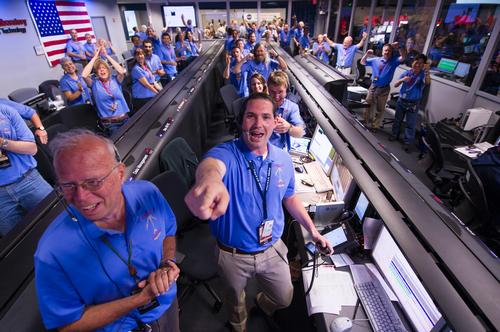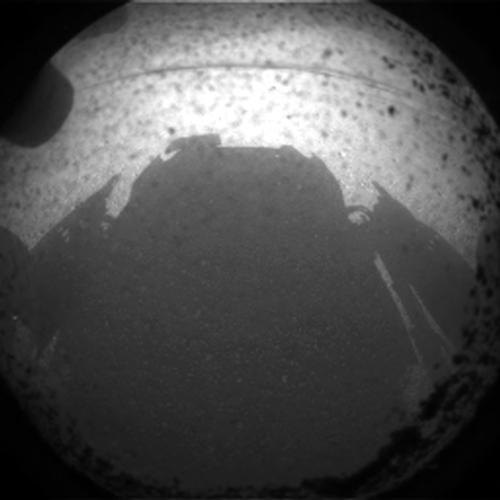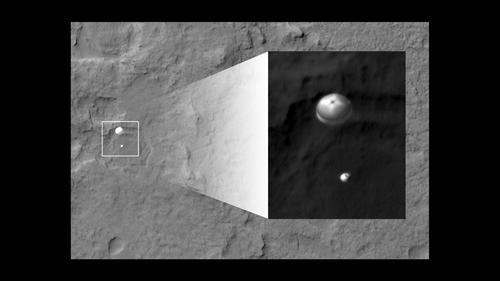New map of the universe reveals its history for the past six-billion years

Just thought this was a neat bit of information.
The scientists of the Sloan Digital Sky Survey (SDSS), including astronomers at Penn State, have produced a new map of the universe that is in full color, covers more than one quarter of the entire sky, and is full of so much detail that you would need five-hundred-thousand high-definition TVs to view it all. The map consists of more than one-trillion pixels measured by meticulously scanning the sky with a special-purpose telescope located in New Mexico. This week, at the annual meeting of the American Astronomical Society in Austin, Texas, the SDSS scientists announced results of four separate studies of this new map that, taken together, provide a history of the universe over the last six-billion years.
Read more HERE
Earthly machine recreates star's sizzling-hot surface

That's just incredible.
Since we can't go to the stars yet, let's bring the stars to us. In a giant X-ray-producing facility, astronomers and plasma physicists have heated a cigar-sized sample of gas to over 17,000 degrees Fahrenheit in order to replicate the surface of stars called white dwarfs.
Read more HERE
Loss of planetary tilt could doom alien life

That earthquake a few Decembers back actually changed the tilt of Earth. Big earthquakes often do, so not only is this a threat to life on other planets, but on our own.
Although winter now grips much of the Northern Hemisphere, those who dislike the cold weather can rest assured that warmer months shall return. This familiar pattern of spring, summer, fall and winter does more than merely provide variety, however. The fact that life can exist at all on Earth is closely tied to seasonality, which is a sign of global temperature moderation.
Read more HERE
The Milky Way contains at least 100 billion planets according to survey

Oh wait, what was it they said just a few decades ago... oh right, that only our system had planets. Idiots.
Our Milky Way galaxy contains a minimum of 100 billion planets according to a detailed statistical study based on the detection of three extrasolar planets by an observational technique called microlensing.
Read more HERE
New class of planetary systems: Astronomers find two new planets orbiting double suns

Star Wars. *snicker*
Kepler-35 planet system, in which a Saturn-size planet orbits a pair of stars. The larger star is similar to the size of the Sun, while the smaller star is 79 percent of the Sun's radius. The stars orbit and eclipse each other every 21 days, but the eclipses do not occur exactly periodically. This variation in the times of the eclipses motivated the search for the planet, which was discovered to transit the stars as it orbits the pair every 131 days. Analogous events led to the discovery of the planet Kepler-34. The discovery of these two new systems establishes a new class of 'circumbinary' planets, and suggests there are many millions of such giant planets in our Galaxy. Using data from NASA’s Kepler Mission, astronomers announced the discovery of two new transiting “circumbinary” planet systems -- planets that orbit two stars. This work establishes that such “two sun” planets are not rare exceptions, but are in fact common with many millions existing in our Galaxy. The work is published today in the journal Nature and presented at the American Astronomical Society meeting in Austin, TX.
Read more HERE
Spacecraft completes biggest maneuver

As I've said before I can't wait for this mission to arrive at Mars!
NASA's Mars Science Laboratory spacecraft successfully refined its flight path Wednesday with the biggest maneuver planned for the mission's journey between Earth and Mars.
Read more HERE
China, India to jump forward with Hawaii telescope

It'll be awesome to have a 30 meter optical telescope!!!
China and India are catapulting to the forefront of astronomy research with their decision to join as partners in a Hawaii telescope that will be the world's largest when it's built later this decade.
Read more HERE
Hubble zooms in on double nucleus in Andromeda galaxy

Here is the pretty picture of the week.
A new Hubble Space Telescope image centers on the 100-million-solar-mass black hole at the hub of the neighboring spiral galaxy M31, or the Andromeda galaxy, the only galaxy outside the Milky Way visible to the naked eye and the only other giant galaxy in the local group.
Read more HERE
Scientists gear up to take a picture of a black hole
Awesome. Awesome, awesome, awesome!!!
On Wednesday, Jan. 18, astronomers, physicists and scientists from related fields will convene in Tucson, Ariz. from across the world to discuss an endeavor that only a few years ago would have been regarded as nothing less than outrageous. The conference is organized by Dimitrios Psaltis, an associate professor of astrophysics at the University of Arizona's Steward Observatory, and Daniel Marrone, an assistant professor of astronomy at Steward Observatory.
Read more HERE










.jpg?__SQUARESPACE_CACHEVERSION=1334183074976)
























